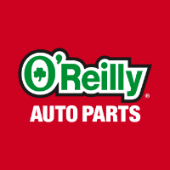-
Welcome to Auto Parts Forum
Whether you are a veteran automotive parts guru or just someone looking for some quick auto parts advice, register today and start a new topic in our forum. Registration is free and you can even sign up with social network platforms such as Facebook, X, and LinkedIn.
Learn the ABCs of Car Care
-
Similar Topics
-
By GreenGears Auto Limited
In the fast-paced world of automobiles, the allure of shiny new parts is undeniable. But amidst the gleaming chrome and cutting-edge technology, a sustainable revolution is quietly gaining momentum - the used car parts market. It's a world where eco-consciousness meets affordability, and Green Gears Auto Limited is leading the charge.
Used Car Parts: The Unsung Heroes of Automotive Sustainability
Let's face it, manufacturing new car parts takes a toll on our planet. From the extraction of raw materials to the energy-intensive production processes, the environmental impact is significant.
Used car parts offer a brilliant solution - they give a second life to perfectly functional components, reducing the need for new production and minimizing waste. It's not just about the environment though. Used auto parts, often Original Equipment Manufacturer (OEM) parts, offer significant cost savings compared to their brand-new counterparts. This means that keeping your car on the road doesn't have to break the bank.
Green Gears Auto Limited: Your One-Stop Shop for Sustainable Solutions
Enter Green Gears Auto Limited, a company dedicated to making sustainable car part solutions accessible to all. Their extensive inventory includes a wide range of used car parts, from engines and transmissions to body panels and electrical components. They even specialize in hard-to-find parts, ensuring that even owners of older or less common vehicles can find what they need.
Whether you're a DIY enthusiast, a professional mechanic, or simply a car owner looking for affordable and eco-friendly solutions, Green Gears Auto Limited has you covered. They offer:
Quality Assurance: All parts are thoroughly inspected to ensure they meet high standards of quality and functionality. Wide Selection: Their inventory covers a broad spectrum of makes and models, making it easy to find the right part for your vehicle. Expert Support: Their knowledgeable team is always ready to assist you in finding the perfect part and answering any questions you may have. Embrace the Green Revolution
The automotive industry is evolving, and sustainability is at the forefront of this transformation. Choosing used car parts isn't just a smart financial decision; it's a conscious choice to reduce your environmental footprint.
So, the next time your car needs a little TLC, consider the sustainable option. Visit
link hidden, please login to view and discover a world of affordable, eco-friendly car parts. Together, let's keep our cars running smoothly and our planet healthy. Remember, every used part is a step towards a greener future.
-
By GreenGears Auto Limited
Are you looking for affordable and eco-friendly solutions for your car repairs? Look no further than Green Gears Auto Limited! We are a leading provider of high-quality used car parts, specializing in components for electric vehicles (EVs), hybrids, and other environmentally conscious vehicles.
Why Choose Green Gears Auto?
Extensive Inventory: We have a wide selection of OEM (Original Equipment Manufacturer) used parts, including hard-to-find components. Quality Assurance: All our parts are thoroughly inspected and come with a warranty for your peace of mind. Environmentally Friendly: By choosing used parts, you're helping to reduce waste and conserve resources. Affordable Prices: Save money on your car repairs without sacrificing quality. Expert Support: Our knowledgeable team is always ready to assist you in finding the right parts for your vehicle. Our Commitment to Sustainability:
At Green Gears Auto, we believe in a greener future for the automotive industry. We're committed to promoting sustainable practices by:
Reducing Waste: We extend the life cycle of automotive components, preventing them from ending up in landfills. Conserving Resources: Reusing parts reduces the need to manufacture new ones, saving energy and raw materials. Supporting Eco-Friendly Vehicles: We specialize in parts for EVs and hybrids, helping to accelerate the transition to a cleaner transportation system. Join Our Community:
We invite you to visit our website,
link hidden, please login to view, to explore our extensive inventory and learn more about our commitment to sustainability. You can also join our online forum to connect with other eco-conscious car enthusiasts and get expert advice on repairs and maintenance. Call to Action:
Browse our Inventory: Find the parts you need today and start saving money and the planet. Contact Us: Have a question? Our friendly team is here to help. Together, let's build a greener future for the automotive industry!
-




Recommended Posts
Join the conversation
You can post now and register later. If you have an account, sign in now to post with your account.
Note: Your post will require moderator approval before it will be visible.